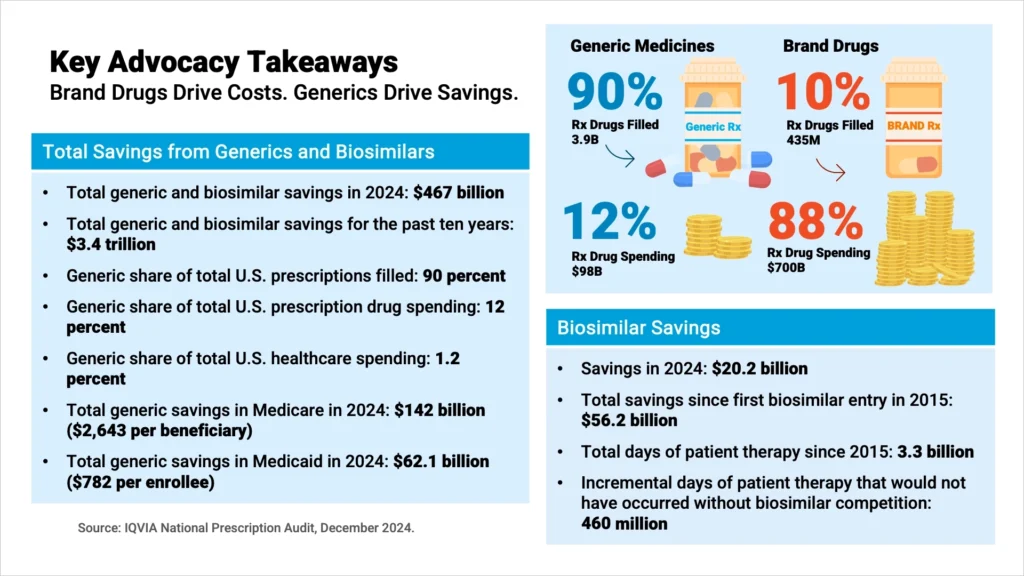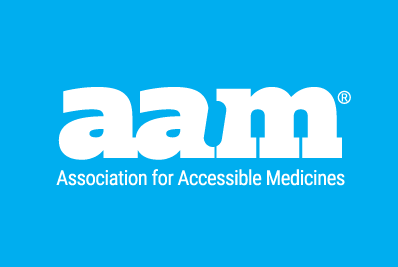AAM’s annual savings report, in partnership with the IQVIA Institute, reveals the use of Food & Drug Administration (FDA) approved generic and biosimilar medicines created $467 billion in savings in 2024 for patients and the U.S. healthcare system—and $3.4 trillion in savings the last ten years. Savings from biosimilar medicines alone increased to $20.2 billion in 2024 and $56.2 billion since the first biosimilar entry, a decade ago in 2015.
However, the long-term outlook for America’s patients hinges on addressing the barriers to development and adoption of these lower-cost medicines. Without action to strengthen generic and biosimilar markets, many lower-cost medicines may fall into shortage – or worse – stop being marketed in the U.S. altogether.
“Generic medicines save money,” said John Murphy III, President and CEO of AAM. “In fact, our industry is the only sector that consistently results in decreased spending across the U.S. healthcare ecosystem. Unfortunately, right now little is being done to infuse sustainability into the generic and biosimilar marketplace. The significant price deflation of the last 30 years can lead to unsustainable market conditions for generic drug manufactures, dangerously impacting patient care, and increasing the likelihood of shortages or even drugs leaving the market. Policymakers must streamline FDA processes, curb patent abuse, stop PBMs and Medicare policies from denying patient access and rollback harmful federal policies – including IRA price controls.”

Up from 2023, which found $445 billion in generic and biosimilar savings, this figure indicates continued savings for the U.S. healthcare system—including patients, employers, and taxpayers.
Generic medicines give America’s patients the confidence to thrive! In the U.S., in 2024, generics comprised 90% of all prescriptions filled, but only 12% of the total American’s spent on prescription drugs. Conversely, brand drugs supported America’s patients less often, making up only 10% of prescriptions filled, while adding up to a staggering 88% of the total amount spent on prescription drugs. This means, in 2024, 3.9 billion generic prescriptions were filled, while only 435 million brand drug prescriptions were filled; AND Americans spent only $98 billion on generic medicines, but a whopping $700 billion dollars on brand drug prescriptions.
Generics and biosimilars continue to provide critical savings throughout the healthcare system and are particularly valuable to Medicare, employer-sponsored health insurance and the patients they serve. Despite these savings, many patients are forced to pay too much for their generic prescription.
Since 2015, biosimilars have been used in approximately 3.3 billion days of patient therapy with no unique clinical challenges. In fact, biosimilar competition has now supported more than 460 million incremental days of therapy — care that patients would not have received otherwise. The livelihood of America’s patients will improve with continued and increased access to lower-cost biosimilar medicines – especially patients being treated for rare diseases where treatment options are limited and expensive. But right now, we are stuck in the biosimilar void – with 90% of brand-name biologics losing patent protection in the next ten years having ZERO biosimilar competition in current development. Because of this, America’s taxpayers and patients could miss out on $234B opportunity for total healthcare savings in the next decade. However the solution is simple: policymakers must take action now to eliminate unnecessary regulatory barriers, end patent thickets, ensure rapid patient access and reverse the damage done by the IRA price controls.
Learn More on the Biosimilars Council Website

